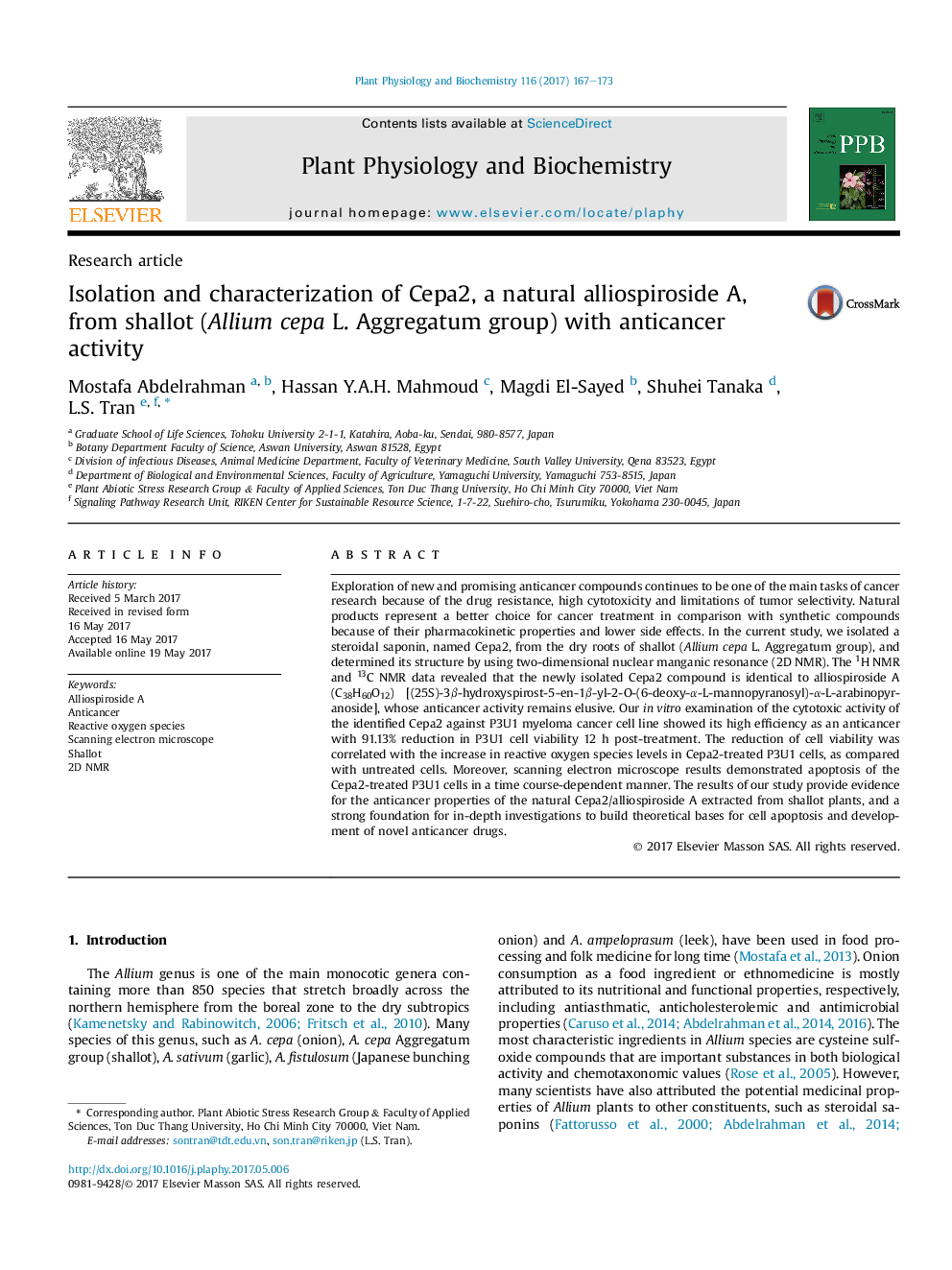| Article ID | Journal | Published Year | Pages | File Type |
|---|---|---|---|---|
| 5515364 | Plant Physiology and Biochemistry | 2017 | 7 Pages |
â¢Cepa2, a steroidal saponin, was isolated from shallot plants.â¢2D NMR revealed that Cepa2 and alliospiroside A have identical structure.â¢Cepa2 showed cytotoxic properties against P3U1 cancer cells.â¢Cepa2-induced ROS caused morphological changes and subsequent apoptosis of P3U1 cells.
Exploration of new and promising anticancer compounds continues to be one of the main tasks of cancer research because of the drug resistance, high cytotoxicity and limitations of tumor selectivity. Natural products represent a better choice for cancer treatment in comparison with synthetic compounds because of their pharmacokinetic properties and lower side effects. In the current study, we isolated a steroidal saponin, named Cepa2, from the dry roots of shallot (Allium cepa L. Aggregatum group), and determined its structure by using two-dimensional nuclear manganic resonance (2D NMR). The 1H NMR and 13C NMR data revealed that the newly isolated Cepa2 compound is identical to alliospiroside A (C38H60O12) [(25S)-3β-hydroxyspirost-5-en-1β-yl-2-O-(6-deoxy-α-L-mannopyranosyl)-α-L-arabinopyranoside], whose anticancer activity remains elusive. Our in vitro examination of the cytotoxic activity of the identified Cepa2 against P3U1 myeloma cancer cell line showed its high efficiency as an anticancer with 91.13% reduction in P3U1 cell viability 12 h post-treatment. The reduction of cell viability was correlated with the increase in reactive oxygen species levels in Cepa2-treated P3U1 cells, as compared with untreated cells. Moreover, scanning electron microscope results demonstrated apoptosis of the Cepa2-treated P3U1 cells in a time course-dependent manner. The results of our study provide evidence for the anticancer properties of the natural Cepa2/alliospiroside A extracted from shallot plants, and a strong foundation for in-depth investigations to build theoretical bases for cell apoptosis and development of novel anticancer drugs.
